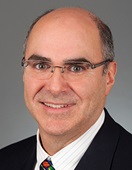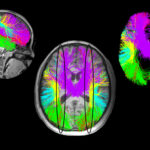Minimally invasive surgery safe and effective for craniosynostosis

Traditional treatment for children with craniosynostosis — a condition in which the bones of the skull grow together too early in the child’s development — usually involves an extensive open craniectomy surgery with a incision to release the fused bones. But a study from physicians in the Cleft and Craniofacial Center at Boston Children’s Hospital finds that an endoscopic, minimally invasive approach provides a safer alternative. Compared with an open surgery that manually repositions the bones, the endoscopic approach is a “release” procedure that allows the brain to grow and position the skull bones correctly.
“Open and endoscopic surgeries should both be embraced by craniofacial surgeons,” says Mark Proctor, MD, neurosurgeon-in-chief and co-lead investigator of the study. “But this study shows that surgeons and families should both be comfortable choosing the less-invasive option, especially in newborns.”
Fourteen-year history of endoscopic surgery
In the largest patient study of its kind, the researchers reported on a 14-year history of treating infants at Boston Children’s with endoscopic surgery for craniosynostosis. They followed 500 babies who were treated at an average age of 3 months for nearly six years.

“The surgery took 47 minutes on average, with less than two hours of anesthesia time, and children were often able to go home after a day in the hospital,” says Proctor. In comparison, open craniosynostosis surgeries can take up to several hours, with patients remaining in the intensive care unit and hospital for several days. Additionally, infants treated with the endoscopic surgery had low rates of blood transfusion, complications, and reoperations.
For an average of seven months after surgery, the infants required use of a helmet to maintain pressure on certain areas of the skull and shield others to stop bones from re-fusing and to achieve a “normal” head shape. The head circumference normalized in all infants by the time they were age 1.
“We’ve also been looking carefully at brain development in these patients, and we are really encouraged,” says Proctor, who has published over 25 research articles on endoscopic craniosynostosis surgery. “We see that not only is endoscopic surgery faster, less traumatic, and less expensive, but also the patients are doing very well in the long term.”
Early intervention is essential
The optimal time for endoscopic surgery is before a baby is 3 months old. Most types of craniosynostosis are eligible for endoscopic release, but some cases where multiple bones are fused together may be too complex. The biggest issue that makes children ineligible, however, is that many infants are not referred to a craniofacial center at an early enough age
“Because minimally invasive surgeries are best done early after birth, prompt referral is important to give families the option versus a larger and riskier open reconstruction procedure,” says Proctor. “It’s the first and most important step for many infants.”
Taking on more complex cases
Encouraged by these study results and their experiences treating a varied group of infants with craniosynostosis, the team is now using endoscopic surgery for more complex cases like Apert syndrome. While these infants had a higher rate of reoperation, Proctor notes, “endoscopic surgery is possibly not a single solution for these patients, but it may be part of a larger treatment plan in early infancy to delay an open surgery until the patient is closer to 2 years old.” The normal treatment paradigm at many centers involves three staged surgeries, so the endoscopic operation offers a substantial reduction in surgeries for most patients.
“As we gain more experience with the techniques in complex patients, we will further refine the best treatment algorithms,” says Proctor. “However, there is no doubt that endoscopic surgeries offer great benefit to the patients and will be here to stay.”
To refer a patient, visit our Cleft and Craniofacial Center’s resources for health professionals.
Visit the Cleft and Craniofacial Center for more information.
Related Posts :
-

Parsing the promise of inosine for neurogenic bladder
Spinal cord damage — whether from traumatic injury or conditions such as spina bifida — can have a profound impact on bladder ...
-

Unveiling the hidden impact of moyamoya disease: Brain injury without symptoms
Moyamoya disease — a rare, progressive condition that narrows the brain’s blood vessels — leads to an increased risk of stroke ...
-

Understanding and treating Mason’s congenital nevus
Kim and Ryan noticed their son’s birthmark almost immediately after he was born. They knew birthmarks were common, but ...
-

Forecasting the future for childhood cancer survivors
Children are much more likely to survive cancer today than 50 years ago. Unfortunately, as adults, many of them develop cardiovascular ...





